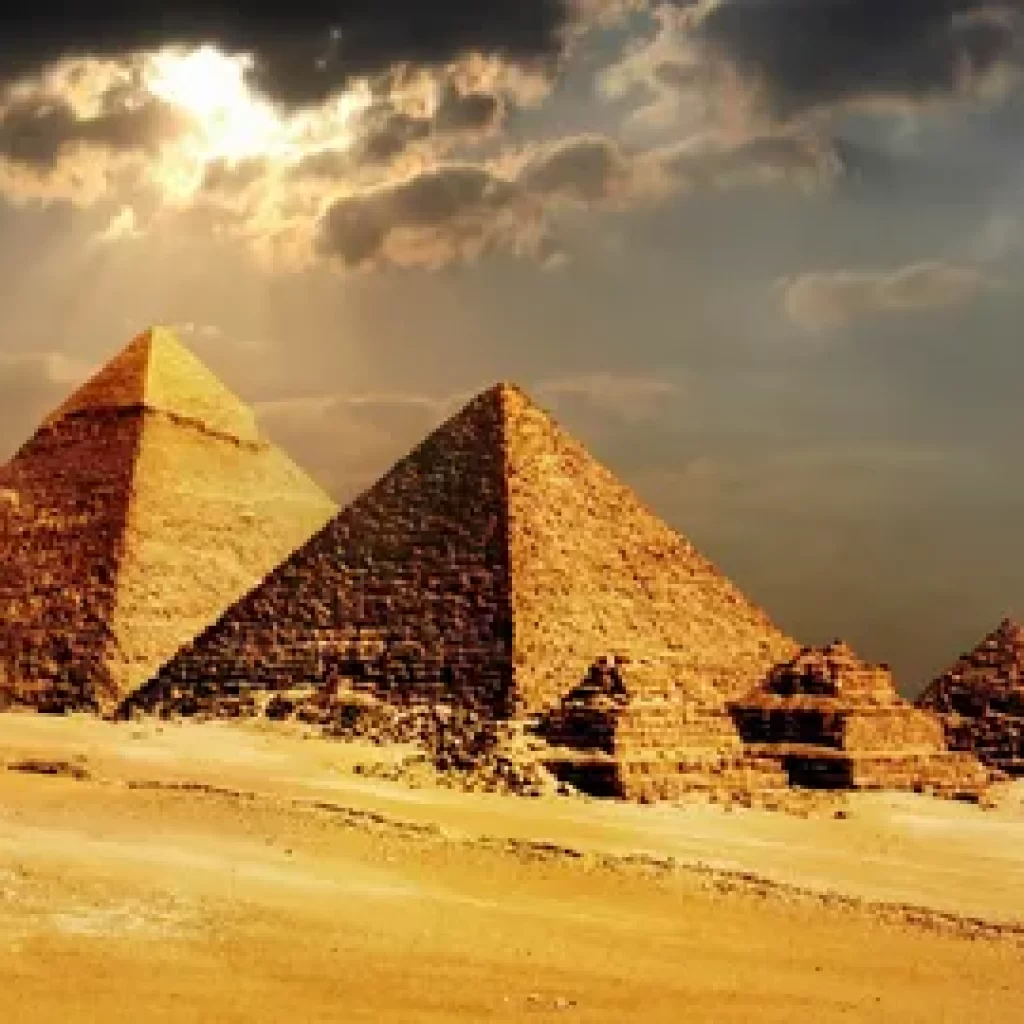
Indulge in the new 9 Pyramids Lounge when exploring the Giza Pyramids Complex.
The Giza Pyramid Complex, just outside of Cairo, Egypt is one of the most iconic sights in the world. Dominated by the towering Great Pyramid of Khufu, the site is also home to 8 smaller pyramids dating back 4,500 years. This guide will take you inside each of the 9 pyramids, sharing their histories, structures, and what can still be seen today.
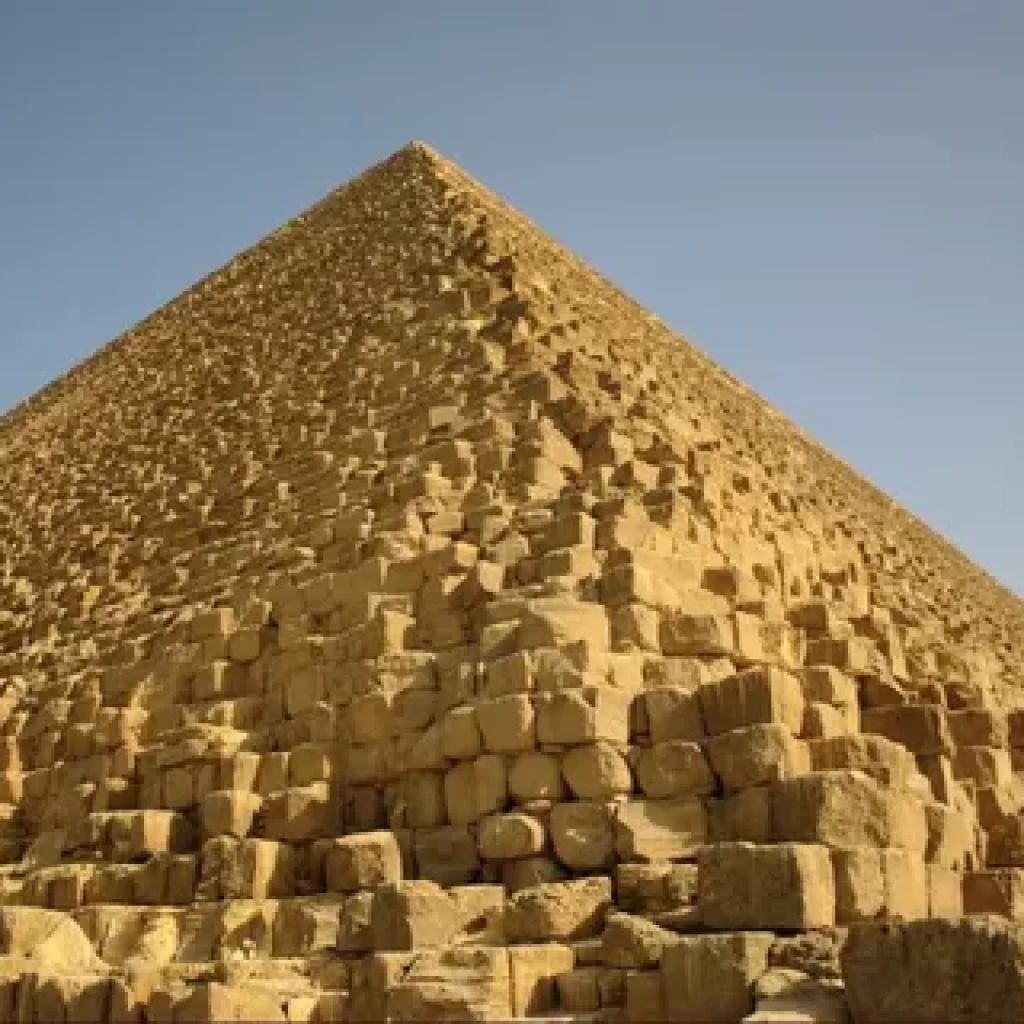
The Great Pyramid of Khufu Giza Pyramid Complex
At 146 meters tall and made of an estimated 2.3 million limestone blocks, the Great Pyramid of Khufu is truly a marvel of engineering. For over 3,800 years, it stood as the tallest man-made structure in the world.
Some key facts about the Great Pyramid:
- Constructed around 2560 BC as the tomb of Pharaoh Khufu (also known as Cheops).
- Covered in polished white limestone casing stones, giving it a smooth finish, though these have eroded away over time.
- Has three chambers – the lowest for storing goods, above this is the Queen’s Chamber, and highest is the King’s Chamber containing Khufu’s sarcophagus.
- Built with an extraordinary degree of precision – base sides have an error of only 58 millimeters in length.
- Interior passages are smaller at the top with blocks weighing 2.5 tons at the base and average 500 kilograms towards the apex.
Though its original entrance is debated, you can currently enter the Great Pyramid through a modern ascending passage in its northern face. This is well worth exploring to grasp its immense scale first-hand.
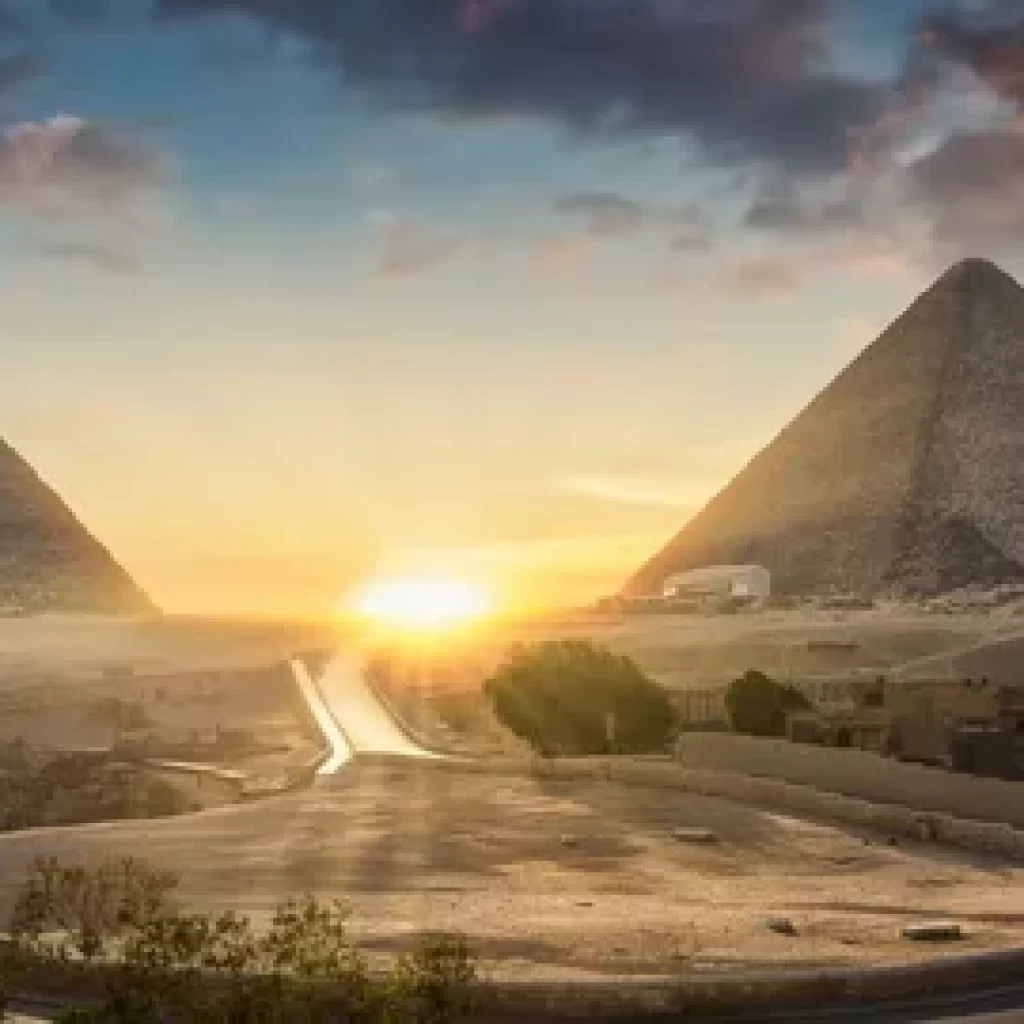
The Pyramid of Khafre
Next to the Great Pyramid and slightly smaller at 136 meters high is the Pyramid of Khafre. This structure housed the pharaoh Khufu’s son and successor, Khafre.
Some notable features include:
- Constructed around 2520 BC later in Khufu’s reign as part of the Giza necropolis complex.
- Has a distinctive elongated and steeply angled appearance, which may mirror how the Great Pyramid looked before its summit eroded away.
- Also has three chambers, but with a more complex interior structure, including two relieving chambers above the King’s Chamber which helped support the immense weight above.
- Situated between two groups of sphinx statues that line the Causeway leading up to a valley temple.
- Has three layers of fine Tura limestone casing covering its core stones, which may have been polished smooth to reflect light like the Great Pyramid.
An open tunnel can be accessed on the pyramid’s northern face, leading to several interior passages and an unfinished burial chamber. The pyramidion, or the top of its original peak, is also on display at the pyramid site.
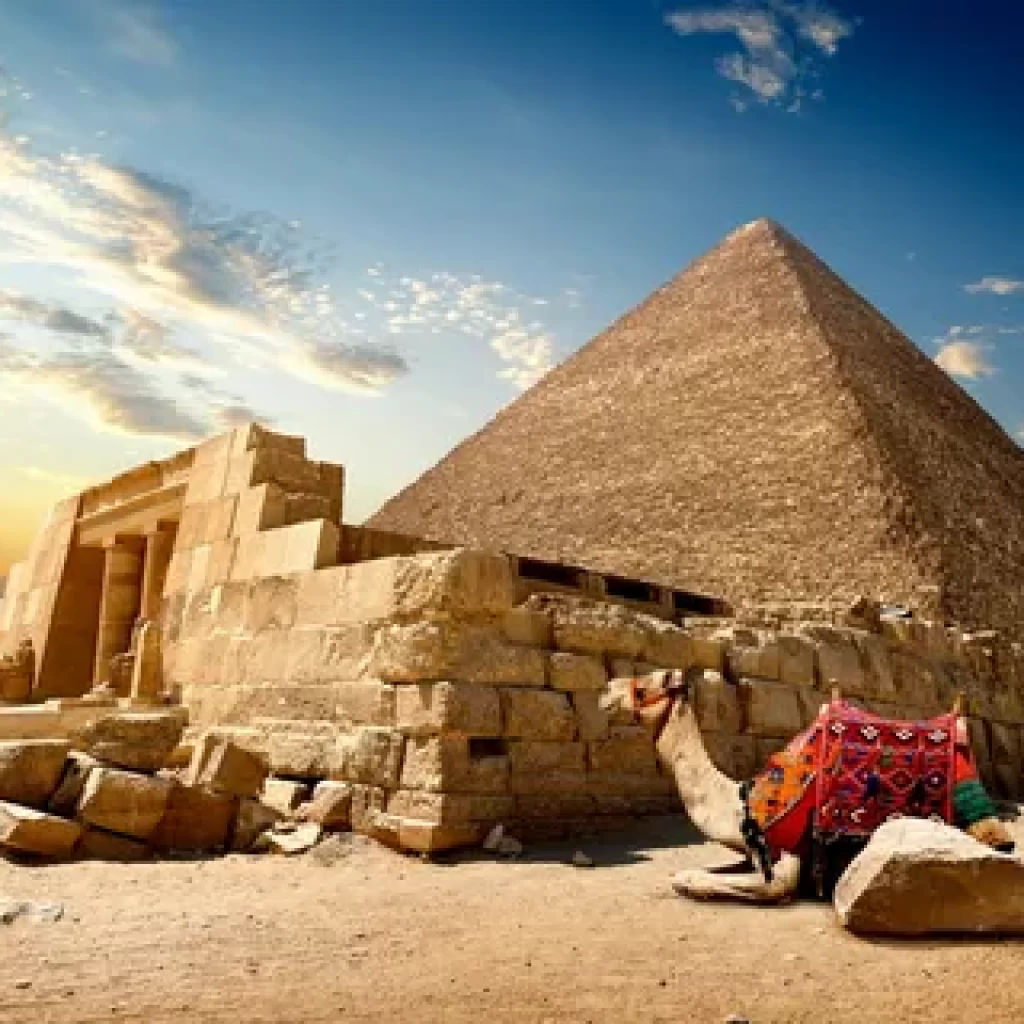
The Pyramid of Menkaure
The third largest and last of the Great Pyramids is that of Menkaure, coming in at 62 meters high. Constructed around 2490 BC, it houses Pharaoh Menkaure, the son of Khafre.
Some details about Menkaure’s pyramid:
- Built of coarser quality limestone and has a more crude appearance versus the two larger pyramids. This reflected Menkaure’s decline in power towards the later Old Kingdom period.
- Has three interior chambers, but is more roughly finished than its predecessors, including a corbelled roof and sloping passage.
- Has the oldest and best-preserved causeway of any pyramid and its valley temple also survives better than the others.
- Has the first known pyramid texts – ancient inscriptions inside offering guidance to the soul through the afterlife – etched on its walls.
- Menkaure and his queen were entombed in plain sarcophagi located in the King’s Chamber at the pyramid’s core.
- Has both original inner and outer pyramidion stones on display nearby, which illustrate how the smooth outer surfaces once looked.
Menkaure’s is the smallest of the three main pyramids, yet still a worthwhile climb to witness history up-close. It gives insight into the decline of pyramid construction quality during later Old Kingdom times.
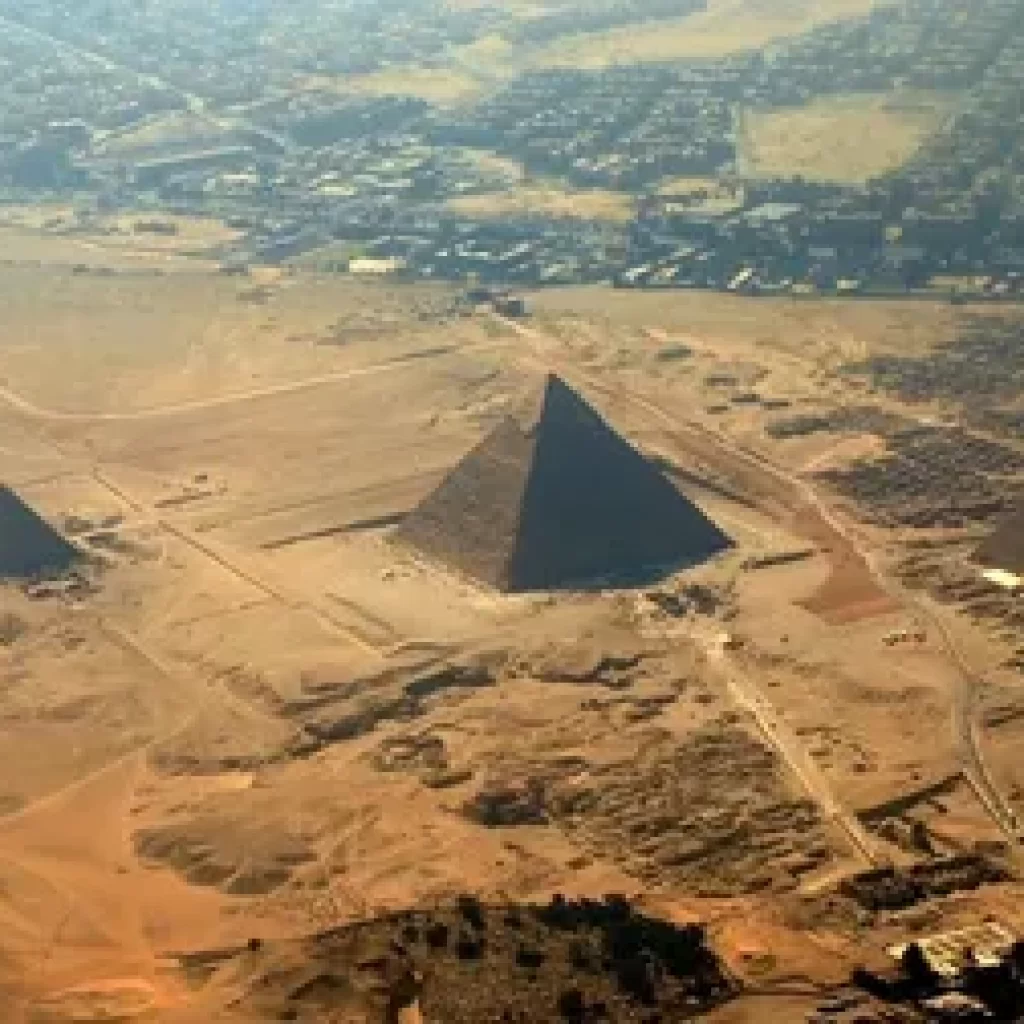
The Pyramid of Khufu’s Boat Pit
Hidden next to the Great Pyramid is a fascinating uncovered boat pit containing a massive 43.6 meter long Khufu solar boat. Constructed of cedar timbers joined with mortise-and-tenon joints, the boat was buried around the pharaoh for use in the afterlife.
Some details about this extraordinary pit discovery:
- Excavated in 1954, the boat is comprised of 1,224 pieces held together solely by rope mounts and pegs.
- Represents the oldest intact boat in existence and is considered a masterpiece of ancient Egyptian wooden craftsmanship.
- Would have conveyed Khufu across the heavens, following the sun god Ra’s travel through the sky and underworld in Egyptian mythology.
- Was carefully rebuilt from its disassembled state and is now housed in a climate-controlled museum built around the boat pit site.
- Remains an unprecedented archaeological find, exhibiting Egyptian expert boatbuilding technology and cosmological beliefs.
Wandering through the site’s museum housing Khufu’s solar boat is thought-provoking for understanding ancient Egyptians’ sophisticated ideas around death and the afterlife. It’s a short walk from the Great Pyramid.
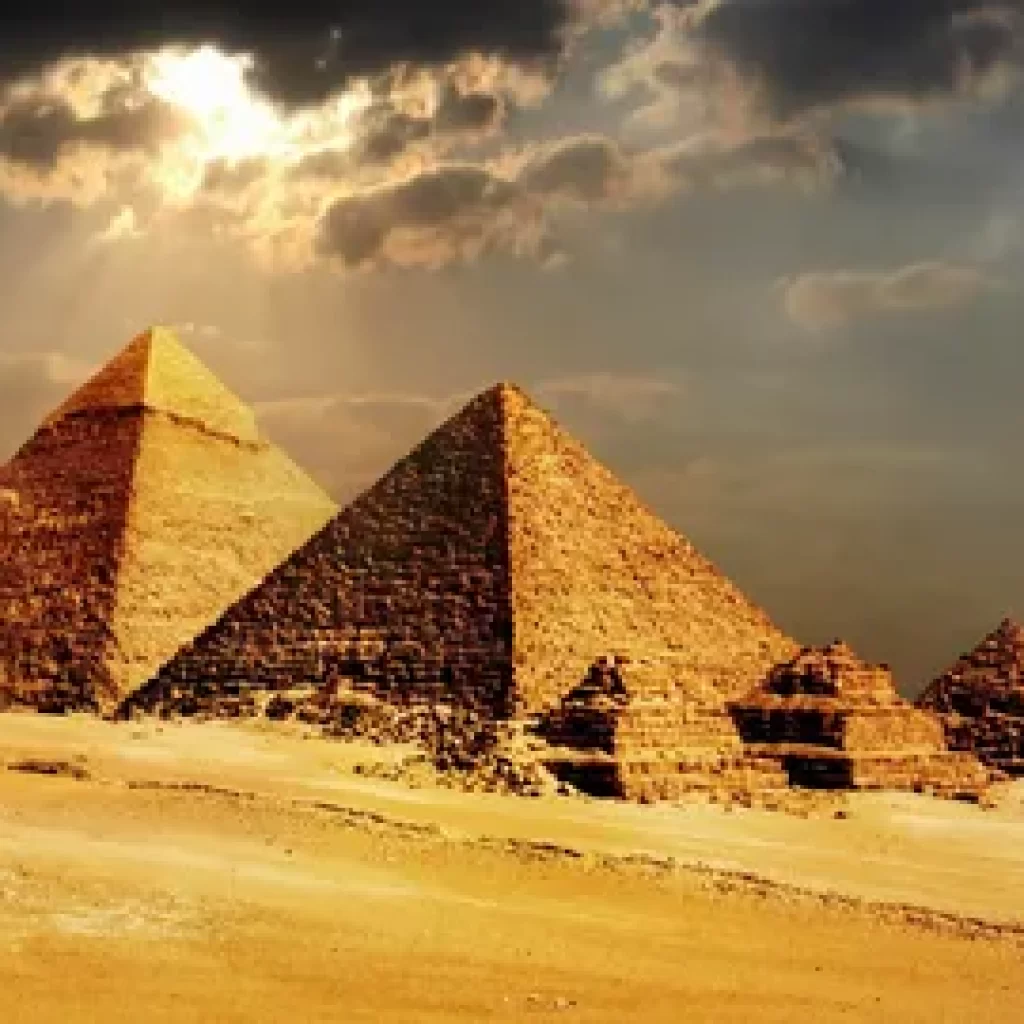
The Lost Pyramid of Queen Khentkawes
Next to Khufu’s boat pit and thought to belong to one of his queens is a much smaller pyramid excavated only in recent decades. Known as the Lost Pyramid, it stands at just under 10 meters.
Some notable details:
- Constructed between 2465-2458 BC during the late Old Kingdom period.
- Builders remain unknown but thought to house Pharaoh Khufu’s mother Queen Khentkawes I based on a funerary temple excavated nearby.
- Features three interior chambers and the southern shaft contained multiple mud brick walls, indicating it was never completed.
- Has rough, sloping passages built with limestone blocks of varied sizes, reflecting hasty construction versus major pyramids.
- Abandoned unfinished with no sarcophagus found, perhaps due to an early death or fallen out of favor politically by the time of her planned burial.
- Rediscovery in the 2010s highlights the site’s untapped potential, as more minor pyramids remain buried nearby. Further excavation continues.
The so-called Lost Pyramid sheds light on a forgotten queen and lesser known pyramid construction during a pivotal period of ancient Egyptian history.
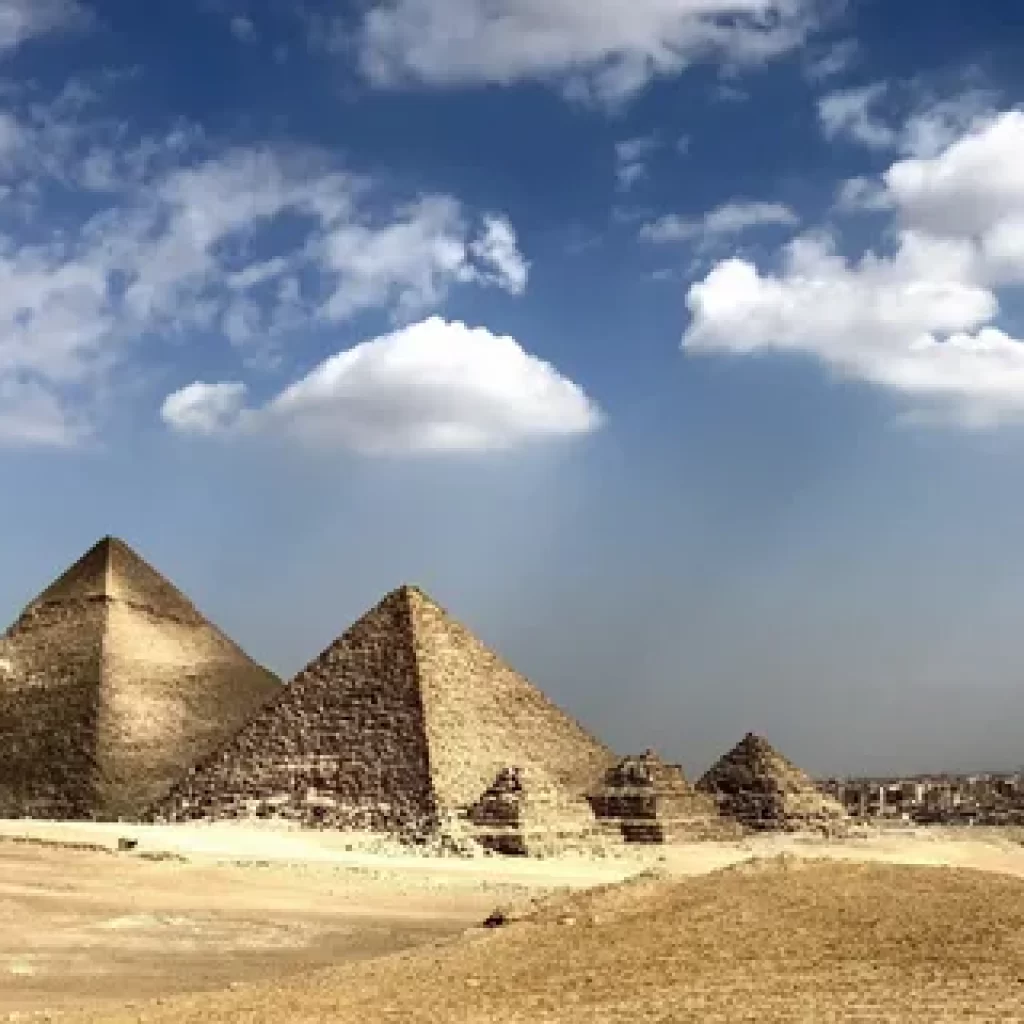
The Pyramid of Queen Khentkaus I
Predating the Great Pyramid complex, this roughly finished 11 meter structure belongs to a female pharaoh. Thought to be the mother of King Menkaure, Khentkaus I ruled during the mid-5th Dynasty, around 2490 BC.
Points of interest:
- Considered the last major monument of pharaonic Giza, predating Khufu’s reign and the site’s main pyramid cluster by over 100 years.
- Has four interior chambers and passages filled with debris from frequent collapses, limiting exploration.
- Unusual layout may indicate it was converted from a mastaba-type tomb to a pyramid in later stages of construction.
- Remains little-known yet important for demonstrating how pyramid architecture evolved earlier at Giza before khufic mastery.
- Thought to be the first ever royal pyramid complex of its kind dedicated to a reigning queen.
Khentkaus I helped transition pyramid styles as a independent female ruler and warrants attention from feminists and those fascinated by Old Kingdom developments.
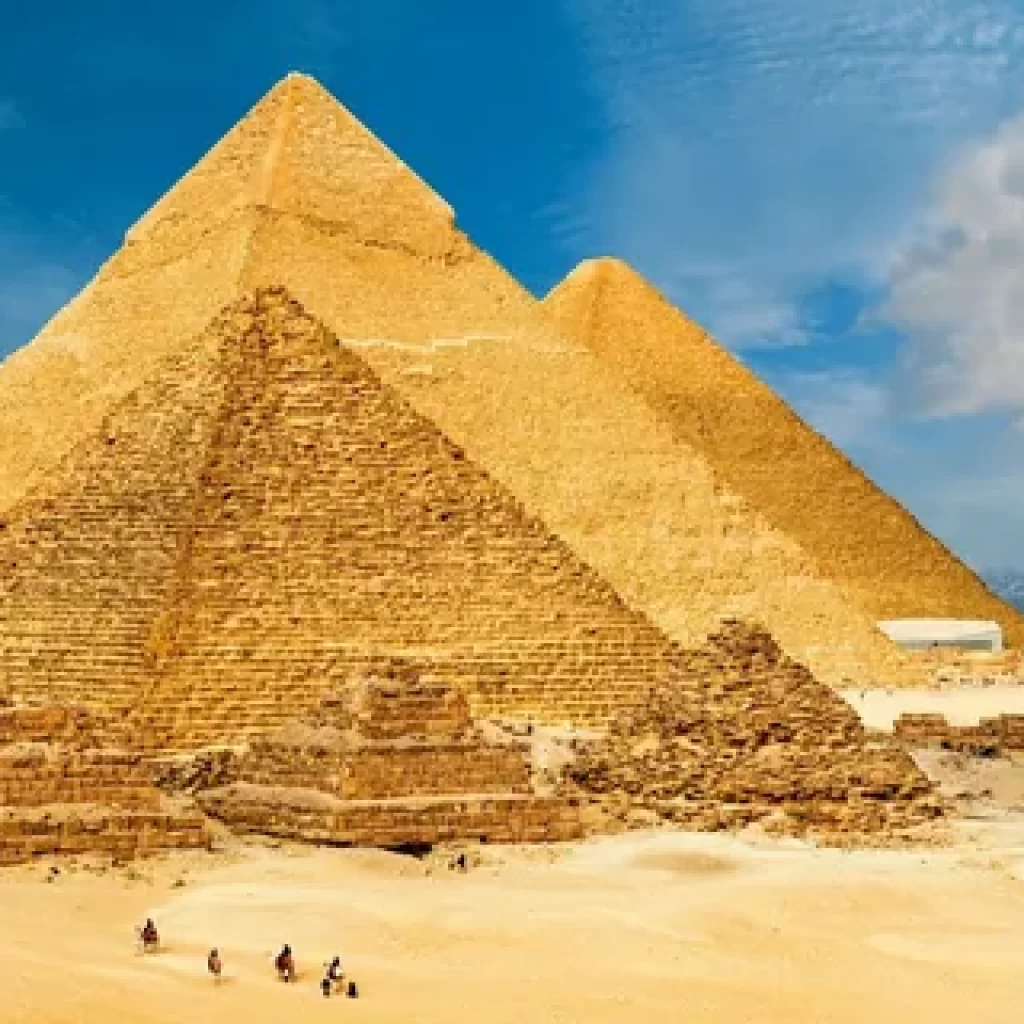
The Pyramids of Queen Neith and Queen Bekenre
Two minor queens’ pyramids stand together southwest of Khafre’s complex, dated to the early 5th Dynasty when pyramid building was declining.
Key facts about these twin pyramid sites:
- Pyramid of Queen Neith is the larger at 10 meters tall and made of mudbricks. Likely housed a minor wife of King Userkaf.
- Neith’s Pyramid has tunnels accessing its innermost chamber, though most interiors are filled with rubble and unexplored.
- Pyramid of Queen Bekenre was slightly smaller at 8 meters tall and also built of mudbrick. Thought to contain Userkaf’s daughter.
- Both pyramids have little remained beyond their eroded bases today, though inscriptions record their existence.
- Represent how royal women were commemorated after pyramid building standards had deteriorated from their glorious Old Kingdom heyday.
While nothing compares to the Great Pyramids, these queens’ cruder structures are significant artifacts from a transitioning period in ancient Egyptian history.
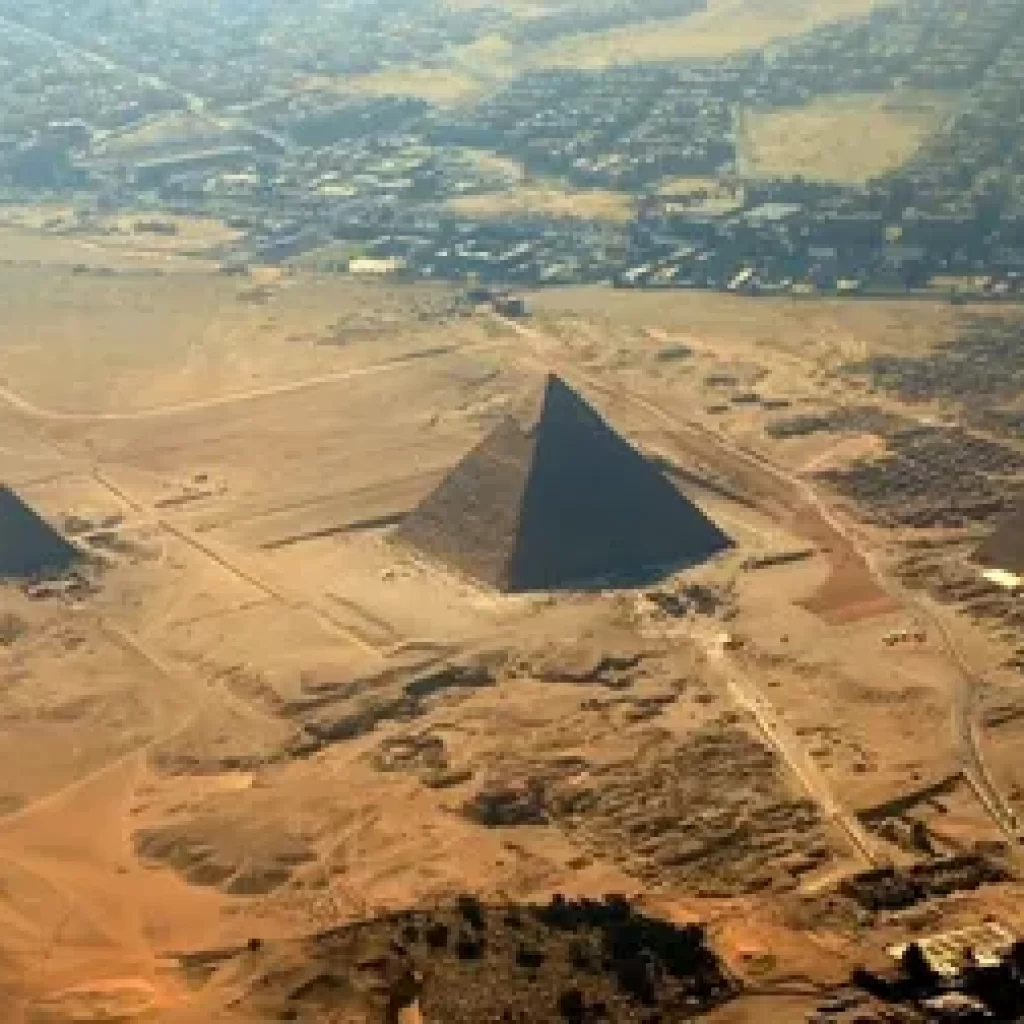
The Subsidiary Pyramids of Khafre
Nestled between Khafre’s main pyramid and its causeway lie five much smaller satellite pyramids from Khafre’s era. Usually called the subsidiary pyramids or queen’s pyramids, they date to around 2520 BC.
Details on these miniature pyramid groupings include:
- Three eastern pyramids range between 9-11 meters, while two western pyramids are only 6 meters tall.
- Believed to house Khafre’s queens, sons, or other relatives rather than members of his ruling court as was once thought.
- Made entirely of limestone blocks versus mudbrick, showing their important connection to Khafre’s royal pyramid complex.
- Had internal chambers and passages, though largely inaccessible due to debris filling and weakening over millennia.
- Display a collection of pyramid styles experimented with at the dawn of pyramid evolution under Khafre.
Short but fascinating for examining a variety of early pyramid types and funerary monuments for Khafre’s royal family members.
Tips for Visiting the 9 Pyramids
Some practical advice to help you explore the nine pyramids fully:
- Visit early morning or late afternoon to avoid crowds in peak heat hours.
- Buy tickets from the main Giza Plateau ticket office versus lesser booths.
- Hire an official guide licensed by the Egyptian Ministry of Tourism to explain pyramid histories and secrets.
- Pack food/water as shops within the site are limited and prices inflated.
- Wear comfortable shoes and layers – weather can vary greatly from blazing to chilly within days.
- Bring a small flashlight/torch for exploring pyramids without electricity.
- Ask guards safely into which structures photography/videos are allowed inside for memory photos.
- Be respectful of the pyramid sites as an active archaeological zones and places of burial significance.
- Visit both the pyramids and Saqqara necropolis nearby in one trip to cover the full history timeline.
Here are some additional details about exploring the Giza pyramids:
- Consider an evening visit to see the pyramids illuminated against the night sky, though check current safety advisories. Some parts may close earlier.
- Rent a bike or take a calèche (horse-drawn carriage) for getting between distant pyramid sites more easily than walking in the heat.
- Download audio guides from the Giza Project research organization covering each pyramid’s architectural and archaeological details.
- Visit the on-site museum showcasing artifacts from each pyramid plus models and exhibits explaining pyramid construction techniques.
- Look beyond the pyramids for other temples, workshops and cemeteries of nobles located around the complex that expand the historical picture.
- Watch the changing shadows and light play across the pyramid faces throughout the day for different perspectives on their immense scale.
- Travel in smaller groups or solo if possible versus large tour crowds to avoid bottlenecks entering narrow interior passages.
- Reserve time to just sit and observe your surroundings without distraction to fully absorb the spiritual significance of these sacred sites.
- Combine pyramid visits with downstream sightseeing like architectural gems in nearby Cairo like the Egyptian Museum.
- Consider an overnight desert camping trip to see the pyramids at sunrise from closer vantage points amid the mystical landscape.
Let me know if any area of Giza’s rich ancient history could benefit from more details or analysis to enhance your visit planning.
Here are some of the most notable and worthwhile temples and workshops to explore in the areas surrounding the Giza pyramids:
- Khafre Valley Temple – Located between Khafre’s pyramid and the Sphinx, this temple housed ceremonies for the pharaoh’s spirit. Its walls contain carvings of Khafre making offerings.
- Khufu’s Valley Temple – Situated near the Great Pyramid, only ruins remain of this temple’s floor which was paved with black basalt. It served important ritual functions.
- Boat Pits of Khufu – Around the base of the Great Pyramid lie boat-shaped pits housing the pharaoh’s solar vessels for the afterlife, including the famous Great Boat Museum.
- Menkaure’s Valley Temple – Well-preserved painted limestone walls cover this temple where funeral rites were held for the king, located by his pyramid’s causeway.
- Tomb of Queen Meresankh III – Dating to Khufu’s time, this mastaba contains exquisite reliefs and artifacts found in situ providing an inside look at a nobleman’s tomb.
- Pyramid Town – West of the pyramids lies a village where artisans lived, containing preserved workshops, ovens, and even ancient graffiti giving a glimpse into daily life.
- Sphinx Temple – Situated between the Sphinx’s forelegs, this small temple contained a statue of the pharaoh Khafre and may have been used for oracle rituals.
- Sphinx Water Shafts – tunnels leading down from the Sphinx to uncover its role in funerary rites and search for a possible buried temple.
Visiting these lesser known but equally fascinating sites provides great context for understanding daily Egyptian practices versus just the pyramids themselves.
Here are some additional temple and workshop sites worthwhile exploring in the Giza pyramid area:
- Satellite Tombs of Giza Plateau – Small mastaba tombs dotting the plateau where viziers and officials were buried near their pharaohs.
- Queen Khamerernebty II’s Tomb – Located near Menkaure’s causeway, this 5th dynasty queen’s tomb contains beautiful carved scenes of her family.
- Menkaure’s Mortuary Temple – Situated across from his pyramid, this temple’s pillars have intricate sunk relief carvings and hieroglyphs.
- Tomb of Meritites I – Nestled between the queens’ satellite pyramids, this Old Kingdom-era vizier’s sepulcher contains unique sketches of artisans at work.
- Causeway of Khufu – Starting from the Great Pyramid’s base and leading to a cliff temple, this paved 3.5km processional path offers pyramid views.
- Western Cemetery – A massive early dynastic cemetery west of the Sphinx featuring graves of pharaohs, nobles and a limestone-carved boatshed.
- Mastaba of Ptahhotep – Just south of the Great Pyramid lies this beautifully painted 5th dynasty tomb of a powerful vizier and his family.
- Ancient Stone Quarries – Large pits southwest of the plateau were the source of limestone used in pyramid construction, still showing marks made by tools.
Visiting these lesser-visited gems provides a richer context for the royal pyramid building and how administrators and artisans supported such immense projects.
In conclusion, the exploration and study of the nine pyramids in Giza have unveiled a multitude of insights into ancient Egyptian civilization and architectural prowess. Through meticulous examination, researchers have uncovered the intricate design, engineering marvels, and cultural significance embedded within these majestic structures.
From the Great Pyramid of Khufu, standing as a testament to human ingenuity and ambition, to the smaller satellite pyramids surrounding it, each edifice offers a window into the beliefs, practices, and societal organization of ancient Egypt. The alignment with celestial bodies, such as the solstices and stars, suggests a deep-rooted connection between the pharaohs and the cosmos, possibly indicative of their divine aspirations and cosmological beliefs.
Furthermore, recent advancements in non-invasive technologies, such as ground-penetrating radar and thermal imaging, have provided unprecedented insights into the internal structures of these pyramids, revealing hidden chambers, passages, and potential burial sites. These findings not only enrich our understanding of ancient Egyptian funerary practices but also present new avenues for future exploration and research.
Moreover, the preservation and conservation efforts undertaken at the Giza Plateau underscore the importance of safeguarding these cultural treasures for future generations. By fostering interdisciplinary collaborations and leveraging cutting-edge technologies, archaeologists and historians continue to unravel the mysteries surrounding the pyramids, shedding light on the lives and legacies of the pharaohs who commissioned these monumental works.
conclusion
The ongoing exploration of the nine pyramids in Giza serves as a testament to humanity’s enduring fascination with the past and our relentless pursuit of knowledge. As we continue to unlock the secrets of these ancient wonders, we not only honor the achievements of our ancestors but also gain invaluable insights into the complexities of human civilization and the enduring legacy of ancient Egypt.





Comment (0)